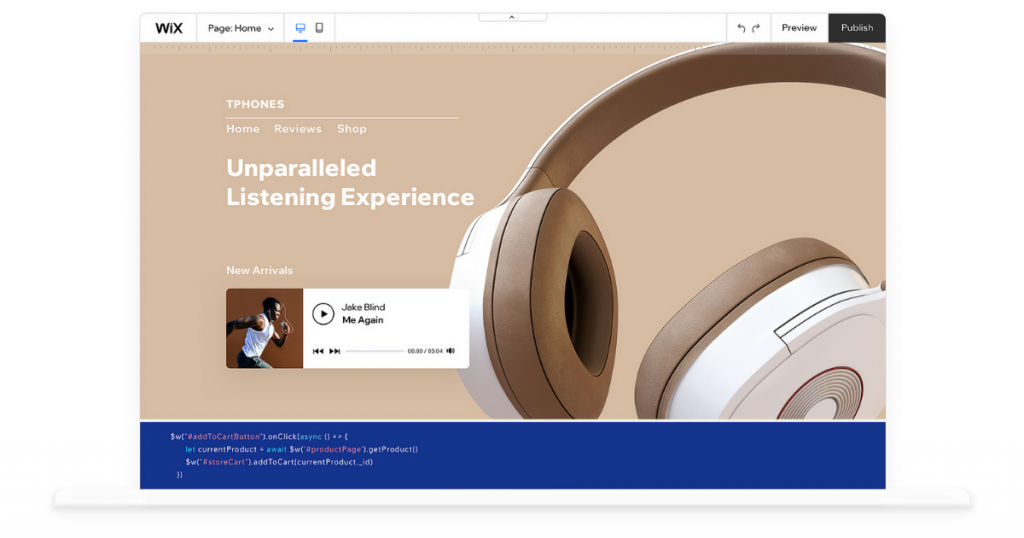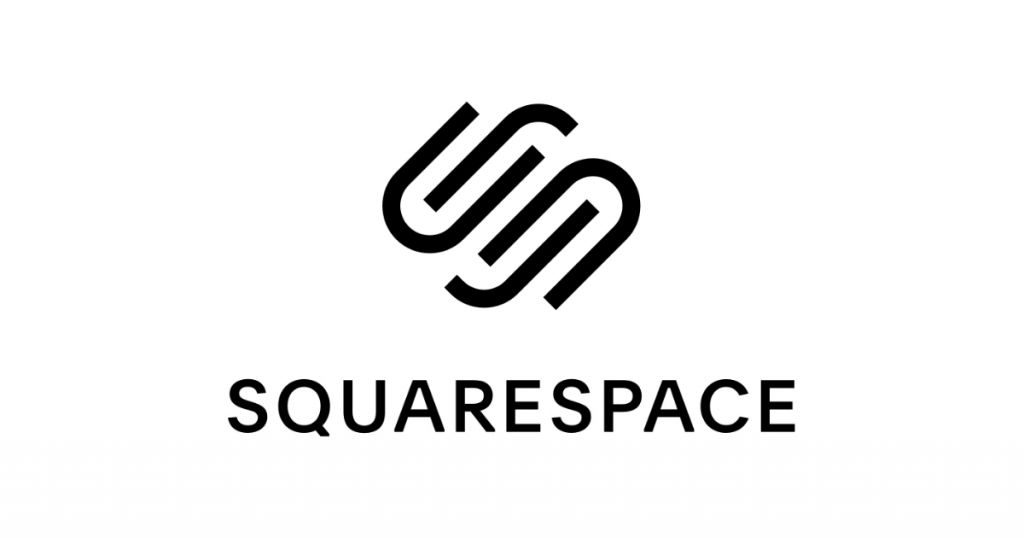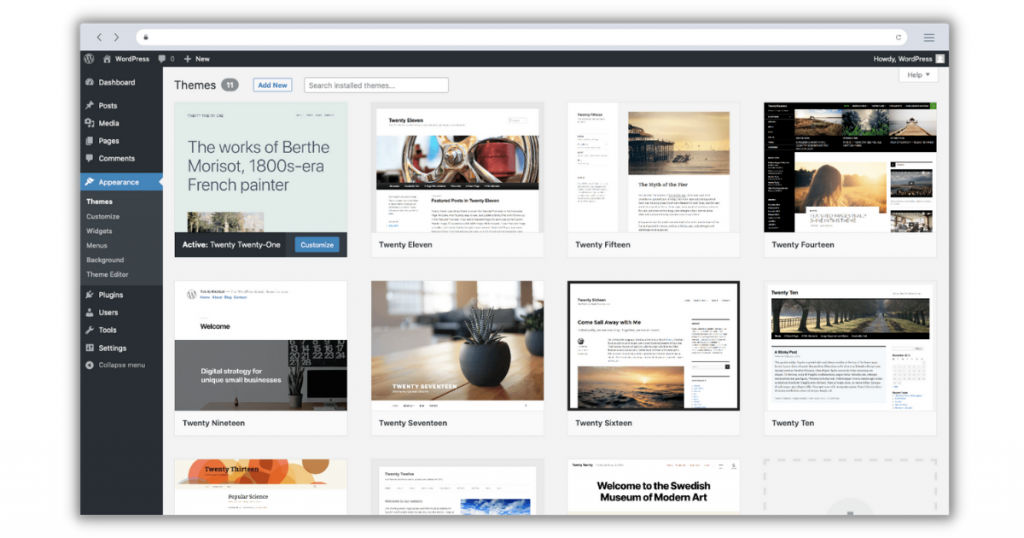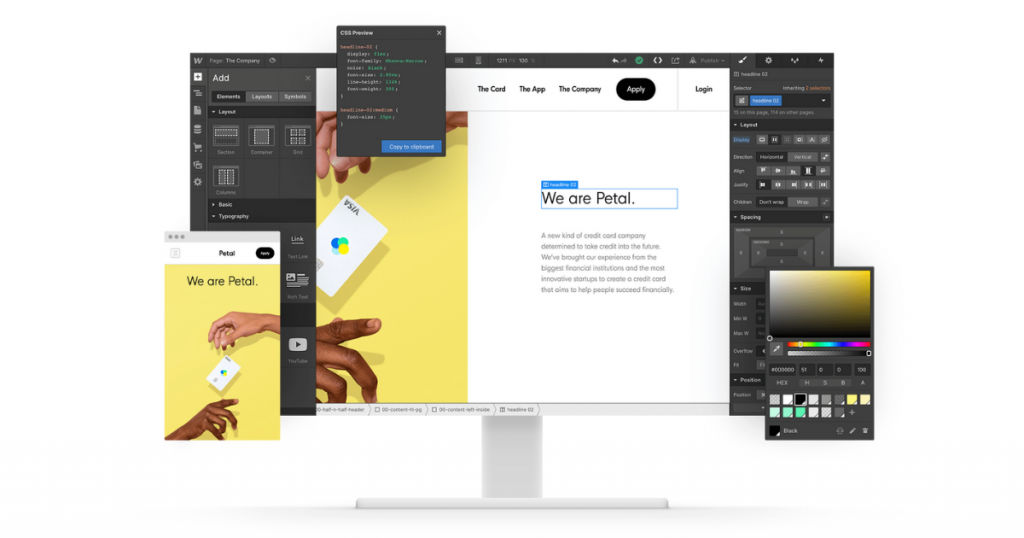
With the number of Mac users increasing every day, the demand for a website builder software for Mac is also on the rise. In terms of software for creating great websites, Mac users have had an unusual time. Fortunately, Mac users now have a plethora of solid and efficient website builder software.
However, with so many different website builders to choose from, it might be tough to select the ideal one for Mac users. That is why we at SaaSworthy have researched and put together a list of the top 5 best website builder software for Mac in 2021.
Table of Contents
What is a website builder software?
Website builder software offers a simple framework for making websites for users that lack substantial programming expertise on how to build a website. Website builders are an excellent way for individuals and small companies to launch a website without paying a developer. It employs templates with drag-and-drop features to quickly design and manage a site.
5 best website builder software for Mac in 2021
The 5 best website builder software for Mac that you can use in 2021 for building your website are given below, along with their features and limitations.
1. Wix

Wix is a website builder software that allows anybody to create and manage a great online presence with simple cloud-based creation and administration tools. Wix is one of the most promising, simple-to-use, yet sophisticated website builders for Mac users.
Wix offers a plethora of ready-to-use templates that you can also personalize to meet your branding requirements. Wix, being a multi-purpose software, is SaaSworthy’s top choice as the best web design software for Mac in 2021.
The various features of Wix include –
- You can use Wix Artificial Design Intelligence to build a website automatically. You can create a personalized website with drag-and-drop capabilities by using the 500+ layouts and 100 fonts available.
- It enables you to connect or establish a custom domain name and obtain a personalized email address.
- To view, manage, and show information on your website, you can use an integrated database or an external data source. You can also integrate your website with external data sources, third-party APIs, Google, and social media platforms.
- You can optimize your website to be mobile-friendly by using animations, photos, texts, videos, and scroll effects such as fade-in, parallax, zoom-in, etc.
The limitations of Wix are –
- It can become quite slow and unresponsive at times, thereby delaying the building of a website.
- There are occasional issues and glitches with the alignment, and creating a mobile layout can be challenging.
2. Squarespace

Squarespace is a website builder software for Mac that enables the creation of websites and blogs, the tracking of online traffic, and the management of content on mobile and desktop apps. Squarespace has a plethora of professionally designed layouts, configurable templates, custom CSS, product marketing, inventory management, etc.
Squarespace handles all of the technical aspects of your website, from web hosting to cross-browser compatibility. It is helpful for small-scale businesses, bloggers, start-ups, artists, students, etc.
The various features of Squarespace include –
- It enables you to create websites that scale automatically to the device on which they are visited without altering the general appearance of the website.
- To build a website, you can use pre-designed structures and add sections, menus, links, maps, surveys, documents, widgets, graphs, custom scripts, and social media symbols.
- Integrating with third-party solutions can help you manage business transactions, stock, and finance, submit taxes, optimize paperwork, advertise items, transport items, and much more.
- You can utilize the built-in image editor, build landing pages with hyperlinks to sub-pages, and highlight pictures using the lightbox. You can also set focus points for photographs, auto-fill hashtags, tiles, and summaries when importing photos.
The limitations of Squarespace are –
- It does not offer a pricing plan based on the country, and therefore can be expensive in some countries.
- There is no autosave feature to save your progress automatically.
3. WordPress

WordPress is an open-source and free website builder software that assists businesses in managing and publishing digital information on the web. It has built-in SEO and connects with Search Console and Google Analytics to effectively monitor website traffic and performance data.
It is the most commonly used website builder software for Mac, as 39.5% of the websites are made using WordPress. WordPress lets you create a blog, a website, or a hybrid of the two.
The various features of WordPress include –
- You have the option of selecting from over 8000 distinct pre-configured themes. You can also create your custom theme and use the Theme Developer Handbook to guide you through the process.
- You can personalize the tools on your website by selecting from over 55,000 available plugins. Plugins for anti-spam protection, SEO optimization, site-building, etc., are available for download.
- You can insert text from Google Drive while preserving formatting or enter it right into the content editor and insert photos. Then you can publish the content to make it live on the web.
- You can use WordPress HackerOne to secure your site and report suspected security vulnerabilities.
The limitations of WordPress are –
- A lot of technical and coding knowledge is required to build and manage a website using WordPress.
- It can be overwhelming and challenging for some users due to the plethora of features and plugins it offers.
4. Weebly

Weebly is a free web design software for Mac that is also a one-stop-shop for freelancers, entrepreneurs, and everyone. Weebly provides you with the option of creating a website or an online store before starting the development process.
Weebly is a suitable website builder for perfectionists as they can switch out multiple layouts at will while preserving the content on the page. Weebly also supports the addition of CSS and HTML to its templates to fine-tune the websites.
The various features of Weebly include –
- Weebly’s data center redundant hosting system manages the business hosting aspects, ensuring quality, efficiency, and reliability for your site.
- Its templates support the incorporation of CSS and HTML and are built for versatility, and are simple to customize to meet your unique requirements.
- Its intuitive drag-and-drop blog building allows you to create a stunning blog while concentrating on your excellent content. Its free and specialized hosting architecture ensures that your site loads quickly and that viewers have a positive experience.
- With Weebly’s integration with Google Workspace for Business, you will have access to robust branded email and productivity features. You also get access to the Google Workspace storage, calendar, and messaging functionalities.
The limitations of Weebly are –
- Some of the plugins do not integrate correctly and contain bugs, thereby preventing certain functions.
- A few widgets and templates are challenging to customize and have limited customization options.
5. Webflow

Webflow, founded in 2013, is a free and offline website builder software. It allows users to design, create, and publish fully customized websites without having to write any code. It offers fully managed web hosting with enterprise-level flexibility.
It has more than 100 servers and data centers located around the world, which are powered by Amazon Web Services. It enables people with various technical abilities to create websites more quickly and without the assistance of professionals.
The various features of Webflow include –
- To attract developers, you can make use of visual development tools. You can enhance the page titles, meta descriptions, and alt text without relying on third-party plugins.
- It allows designers to create beautiful and sophisticated animations without having to write any code. You can create accurate parallax, progress bars, reveal animations, and other effects. You can design refined hover animations and select from a library of 20+ in-built actions and animations.
- It provides a platform for hosting and enables you to upload and edit the content on the live website and publish it with a single click.
- It ensures that the website loads quickly and is accessible at the earliest, and manages huge visitor volumes.
The limitations of Webflow are –
- It is not suitable for all purposes as it does not require any code.
- Its CMS editor has some bugs and is not scalable.
Conclusion
We hope that we were able to throw some light on the various website builder software options available in the market for Mac users right now. Now that you have reviewed the pros and cons of the 5 best website builder software for Mac, you can select the one that best suits your needs.
For more informative articles about the best software in each software category, visit SaaSworthy blog.
Also read:
• 5 Best Business Intelligence Software for Mac: A Comprehensive Guide






